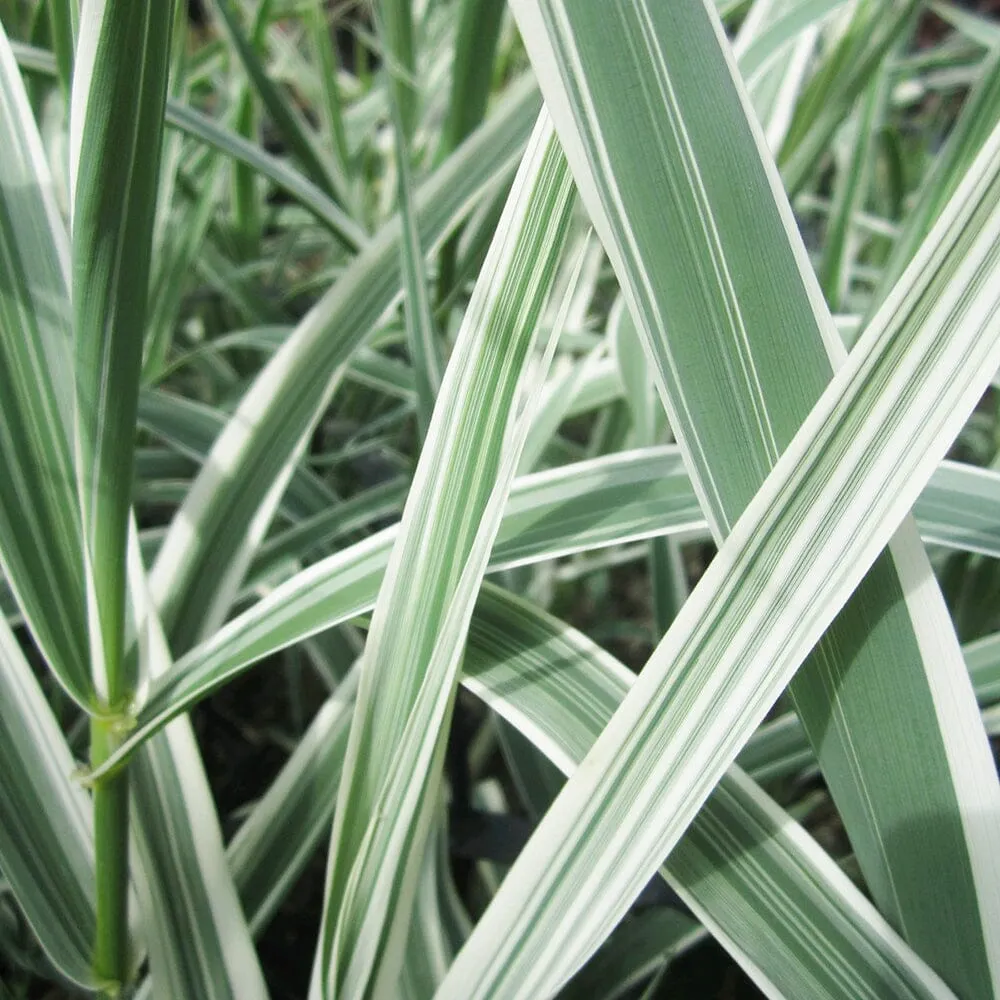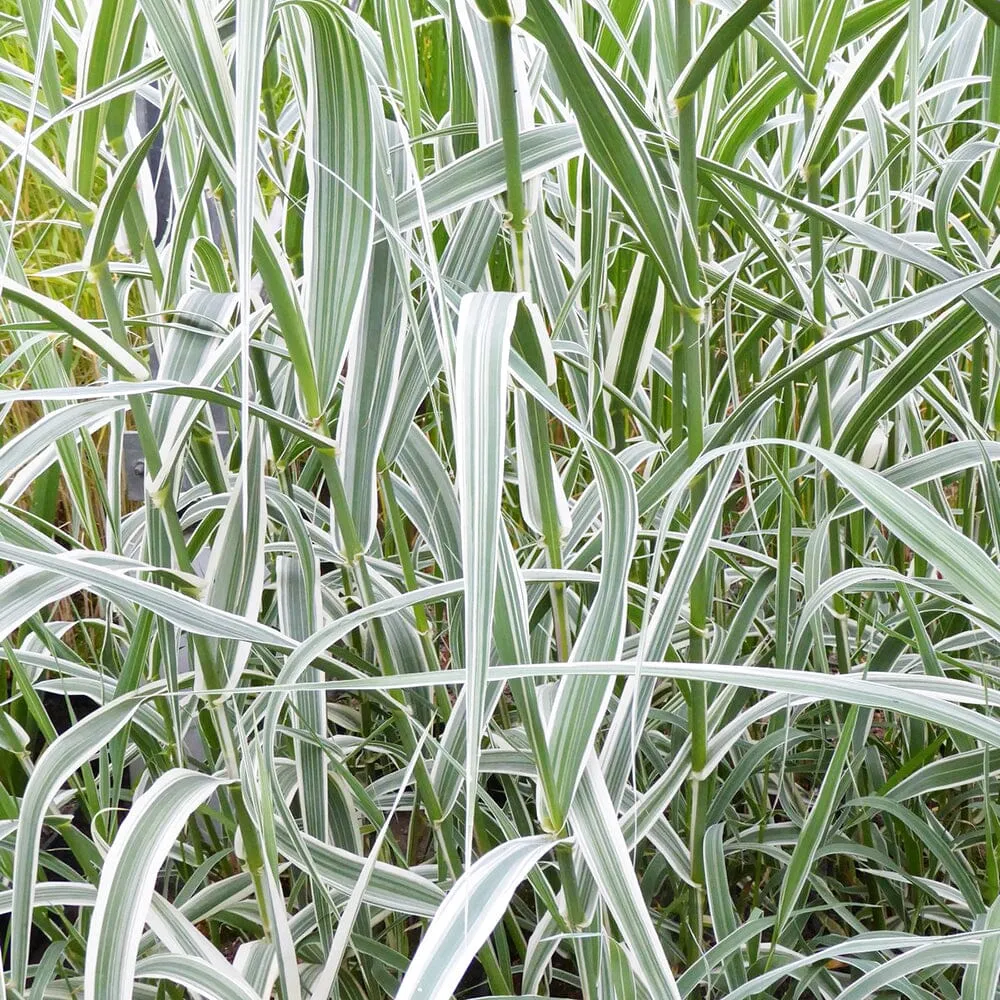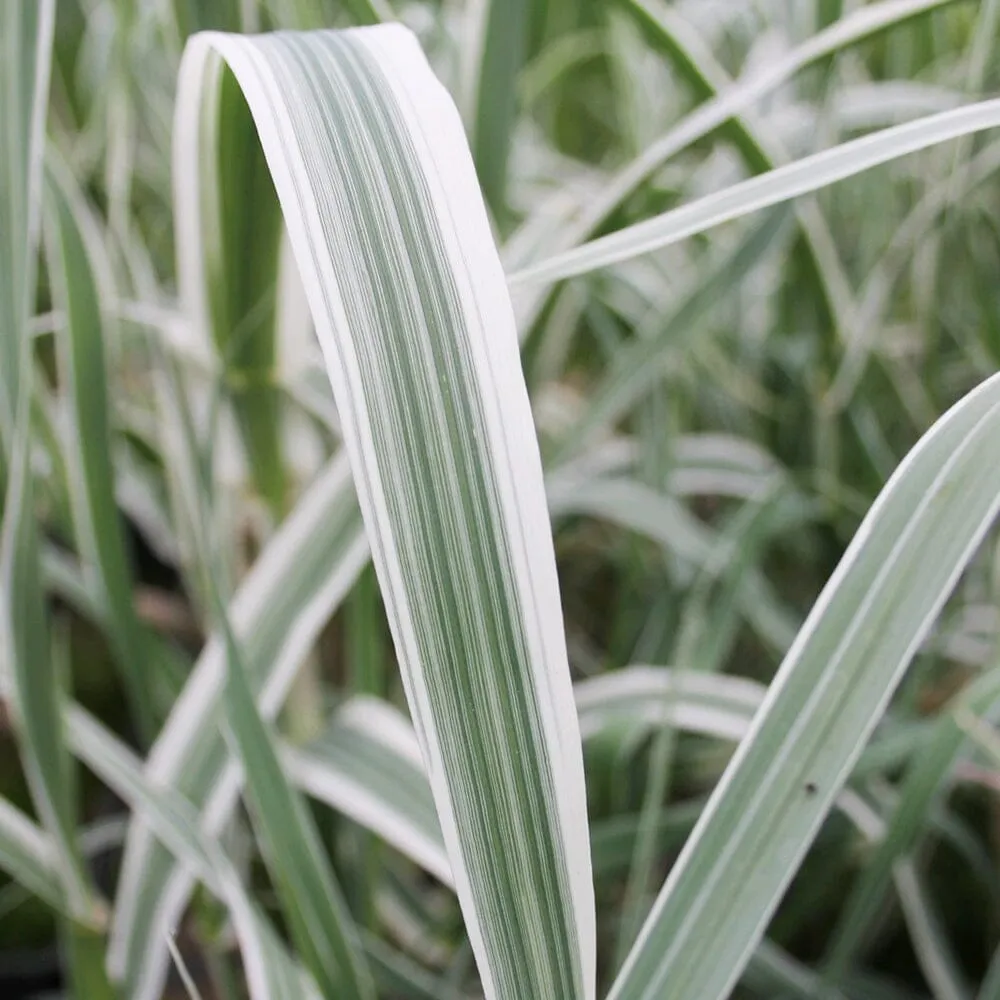Arundo donax variegata, commonly known as Variegated Giant Reed or Variegated Bamboo Reed, is a large perennial grass known for its striking variegated foliage.
Here's a detailed description and care guide for Arundo donax variegata:
Description:
Arundo donax variegata is a tall, clump-forming grass that can reach heights of 2-5 meters (6-16 feet) and spread up to 2 meters (6 feet). It features large, arching stems that are green with creamy white longitudinal stripes. The foliage is variegated, with creamy white or yellow stripes running parallel to the leaf edges. The leaves are long, narrow, and lance-shaped. In late summer or early fall, the plant produces feathery, plume-like flower heads that can reach up to 60 cm (24 inches) in length. The flowers are followed by tan-colored seed heads that persist throughout winter.
Care Guide:
Light: Arundo donax variegata thrives in full sun to partial shade. It prefers at least 6 hours of direct sunlight per day to achieve optimal growth and coloration of its variegated foliage. However, it can tolerate some shade, particularly in hotter climates, where it benefits from protection against intense afternoon sun.
Water: This grass is moderately drought-tolerant once established but prefers consistently moist soil. Water deeply and regularly during the growing season to keep the soil evenly moist. Avoid waterlogging or allowing the soil to become excessively dry. Mulching around the base of the plant can help retain soil moisture.
Soil: Arundo donax variegata prefers fertile, well-draining soil. It can tolerate a wide range of soil types, including sandy, loamy, or clay soils. However, it thrives in moist soil conditions. Amending the soil with organic matter, such as compost or well-rotted manure, before planting can improve fertility and drainage.
Temperature: This grass is hardy in USDA hardiness zones 7-11. It can tolerate a range of temperatures but prefers mild climates. In colder regions, it may die back to the ground in winter and resprout in spring. Provide protection, such as mulching, for the plant in colder climates to help insulate the roots during winter.
Fertilizer: Arundo donax variegata generally doesn't require heavy fertilization. Applying a balanced slow-release fertilizer in spring can provide the necessary nutrients for healthy growth. Follow the package instructions for application rates. Avoid excessive nitrogen fertilizers, as they can promote lush foliage growth at the expense of coloration.
Pruning: This grass benefits from regular maintenance to control its size and shape. In early spring before new growth emerges, cut back the old stems to ground level to rejuvenate the plant. Trim away any dead or damaged foliage throughout the growing season. However, be cautious as the plant can spread aggressively through underground rhizomes.
Pests and Diseases: Arundo donax variegata is generally resistant to pests and diseases. However, it can occasionally be affected by aphids or spider mites. Monitor your plant regularly and use appropriate insecticidal soap or organic insecticides if necessary. Proper spacing and good air circulation can help prevent fungal diseases.
Landscape Use: Arundo donax variegata is commonly used as an ornamental grass for its attractive variegated foliage and tall stature. It works well as a specimen plant or as part of a mixed border or landscape design. Its vigorous growth and spreading habit also make it suitable for erosion control along water bodies or in wetland areas.
Arundo donax variegata is an eye-catching grass that adds vertical interest and texture to the landscape with its tall stems and variegated foliage. By providing the right growing conditions and regular maintenance, you can enjoy its striking appearance and graceful presence in your garden.

 Cart(
Cart(












